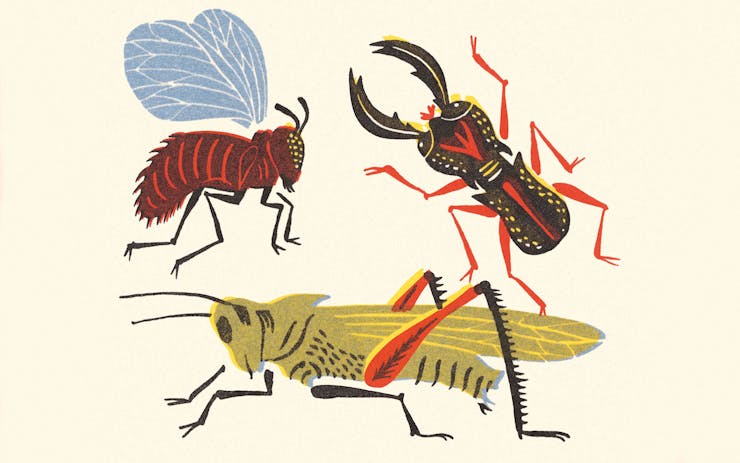Fear can be crippling. Don’t live your life in fear.
“Pesticide” is the most serious buzzword in all of cannabis right now. It’s damn near Voldemort. The reason is, for consumers, the word has been directly linked to the thought of “dangerous cannabis.”
But before we throw up the red alert beacons about all things cannabis, let’s add a little nuance to the conversation.
What Is a Pesticide?
Pesticide is a word, not a weapon.
By definition, a pesticide is a substance used for destroying insects or other organisms harmful to cultivated plants or to animals. This means herbicides for destroying weeds, insecticides for controlling insects, fungicides to prevent mold and mildew, disinfectants to prevent the spread of bacteria, and compounds used to control mice and rats.
“When the [cannabis] plants are creating terpenes, those are basically pesticides. They’re the natural defense mechanism that the plant creates, so it’s more about the use of the word and understanding what it means for your products,” says Lo Freisen, CEO and Chief Extractor of Washington’s Heylo Cannabis, a processor that places extreme emphasis on the use of sustainably grown, pesticide-free cannabis.
Why Do People Fear Pesticides?
Some think the inhalation of pesticides is linked to health problems, such as respiratory issues and the dreaded Cannabinoid Hyperemesis Syndrome (CHS). In so many words, CHS is a condition that causes cannabis consumers to experience fits of nausea and vomiting, as well as abdominal pain. But there truly is not enough research or data to justify the connection between CHS and pesticide inhalation. Still, you don’t want to be smoking them.
“Pesticides are everywhere. We’re breathing them in the air around us. The toxicity of pesticides aren’t that high when consuming them, or eating or touching them. However, when people combust/inhale pesticides, things can become a health issue,” says Pat Reynolds, Operations Director of Confidence Analytics, a cannabis testing lab in Washington State.
Which Pesticides Do People Fear?
One of the most frequently used pesticides in cannabis production is neem oil, a naturally occurring pesticide found in seeds of the neem tree. The active component of this pesticide is azadirachtin.
Heylo’s Friesen says: “Azadirachtin comes from neem oil, and neem has been used a lot in cannabis because it’s a natural compound that’s considered organic. But there has been some anecdotal evidence that shows that this could be the reason people get sick from cannabis.”
Many consumers believe azadirachtin to be the cause of CHS, while others believe it is not CHS that consumers are experiencing, but actually azadirachtin poisoning. Both ideas remain unconfirmed by science.
There are multiple compounds, in addition to azadirachtin, found in pesticides that consumers do not want to be inhaling, regardless of their levels of toxicity. This extensive list of California’s banned pesticides features many of them.
Can Cannabis Really Be Pesticide-Free?
High-quality cannabis is free of insects, mold, and mildew. If “clean cannabis” producers are using absolutely no substances to prevent these from attacking your cannabis, how exactly are growers keeping them away from your beautiful buds?
The answers are simple:
- Growing in a controlled environment, i.e., indoors, allows a producer to regulate what’s going on in their grow rooms, though this definitely heightens the risk of crop loss if pests do enter the room.
- The law doesn’t always require the disclosure of using approved pesticides. “Just because something is organic or is Clean Green certified doesn’t mean that they don’t use some sort of approved product on the plant,” says Friesen.
- Applying pesticides during the vegetative state of a plant’s life is a common practice, and pesticides (hopefully) will not remain as the plant begins to flower and produce the final product that ends up on our shelves.
What this all means is that “pesticide-free” is not as simple as it reads, and consumers need to dig deeper into the brands and products that claim it.
Which Pesticides Are Safe for Cannabis?
Though most cannabis producers do implement some sort of pesticide into their growing methods, there are still plenty of safe ways of pest management that will not harm consumers.
Beneficial insects are bugs—such as ladybugs, pirate bugs, and green lacewings—that do not harm cannabis, but instead, eat the pests that will attack it.
In addition to beneficial insects, some growers pull natural pesticides already used in certain plants and apply them to cannabis in order to maintain an organic integrity. Examples of this include rosemary oil and chrysanthemum oil—this is the active ingredient in pyrethrins, common pesticides used on cannabis.
How to Buy Pesticide-Free Cannabis
At the end of the day, the safest cannabis to consume will always be of the pesticide-free variety. The only way we’ll ever truly know what products truly fall under that umbrella is if they go through verified lab testing, and companies provide the results for each and every product.
For consumers seeking that good ol’ clean green, Freisen’s advice is to simply demand it: “Ask for test results and go to shops that actually vet their vendors. Being a consumer is the most powerful position you can be in. And that’s part of the law, they have to disclose that information if they have it.”
And if they don’t have it? Then you don’t want that producer’s cannabis.





